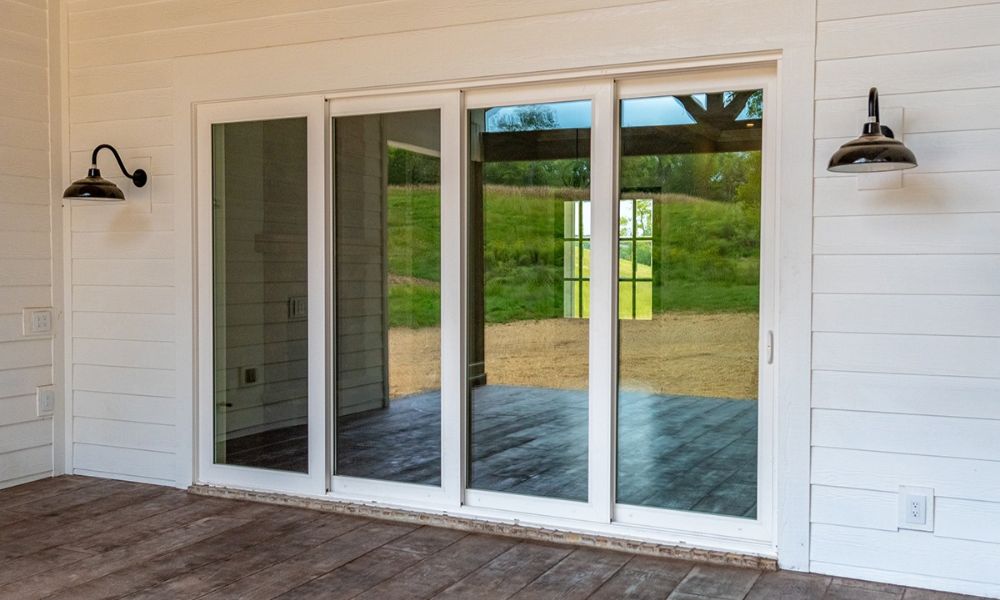Table of Contents
Sliding patio doors are a popular feature in many homes, offering a blend of aesthetic appeal and functionality. They add style and elegance and create an inviting open space connecting the indoors and the outdoors.
Sliding patio doors come in various styles, sizes, and colors, allowing homeowners to match them seamlessly with their interior and exterior décor. Additionally, sliding patio doors can be customized for improved energy efficiency and noise reduction, making them a practical choice for modern living. However, while they bring numerous benefits, specific issues can affect efficiency and functionality.
Understanding these problems is key to maintaining the performance and appearance of your sliding patio doors.
Are Sliding Doors Worth It?
Sliding patio doors are worth considering for those looking to enhance their home’s style and openness. They offer a unique combination of elegance and practicality, allowing natural light to flood in and providing an unobstructed view of the outdoors. Their sleek design saves space compared to traditional hinged doors, making them an ideal choice for homes with limited space. Moreover, the available customization options mean that homeowners can choose doors that suit their specific needs, whether for energy efficiency, noise reduction, or security.
However, it’s essential to be aware of potential drawbacks, such as maintenance requirements and the common problems discussed below, to ensure that sliding patio doors remain valuable to your home.
6 Common Sliding Patio Door Problems
1 – Sliding Patio Doors Are Hard To Slide
One of the most frequent issues with sliding patio doors is difficulty sliding them open or closed. This problem often arises due to dirty, rusted, or broken rollers. Over time, dirt and debris can accumulate in the track, causing friction and making the door hard to move. Regular cleaning and lubrication of the rollers can significantly improve their movement.
Another issue is misaligned wheels, which can occur if the door is not correctly aligned with its track, resulting in gaps and operational difficulties. Bent tracks can also impede the door’s movement. This typically happens due to impact or frequent use but can often be remedied with careful realignment using tools like pliers.
2 – Drafts or Air Leaks
Drafts and air leaks in sliding patio doors can lead to discomfort and increased energy bills. These issues usually stem from worn weather stripping or poor door alignment. Replacing old weather stripping and ensuring the door is properly aligned can effectively resolve these problems, enhancing the door’s insulation properties and your home’s overall energy efficiency.
3 – Locking Mechanism Issues
Locking mechanisms in sliding patio doors can fail for various reasons, including misalignment or wear and tear. When the lock does not engage properly, it poses a security risk and can affect the door’s functionality. Regular maintenance, such as tightening loose components and aligning the door, can prevent these issues.
In cases where the lock is damaged, replacing it with a new, more secure lock is often the best solution.
4 – Condensation Build-Up
Condensation between the panes of glass in sliding patio doors is a common issue, especially in older models. This usually indicates a broken seal in double-glazed doors, leading to moisture seeping in. Addressing this problem may require resealing the panes or, in some cases, replacing the door unit to ensure proper insulation and visibility.
5 – Torn Screen Door
Screen doors accompanying sliding patio doors are prone to wear and tear. Tearing can occur due to various factors, including regular use and exposure to the elements. Small tears can often be repaired with screen repair kits, but larger damages might necessitate a complete screen replacement to maintain the door’s functionality and appearance.
6 – Frame Damage
Frame damage in sliding patio doors, such as warping, rotting in wooden frames, or corrosion in metal frames, can significantly affect their operation and longevity. Regular cleaning, painting, or sealing can prevent these issues. In severe damage, professional repair or frame replacement may be necessary to restore the door’s integrity.
Contact AAA Screen & Window For Sliding Patio Door Repair or Replacement
If you’re experiencing any of these common sliding patio door problems, or if you’re considering installing new sliding doors, AAA Screen & Window is here to help. Our team of experts specializes in repairing and replacing sliding patio doors, ensuring your doors are functional and contribute to the beauty and efficiency of your home.
Contact us for a professional assessment and quality service to breathe new life into your sliding patio doors.
FAQ About Sliding Patio Doors
To fix a sliding patio door that won’t slide, start by cleaning the track and rollers to remove any dirt or debris. If the door still doesn’t slide smoothly, check the rollers for damage or wear and lubricate them. If the problem persists, the rollers or track may need to be adjusted or replaced.
The life expectancy of a sliding glass door can vary depending on the material, quality, and maintenance, but typically, a well-maintained sliding glass door can last between 20 to 30 years. Regular cleaning and timely repairs can extend its lifespan.
Signs of bad sliding door rollers include difficulty in sliding the door, a grinding noise when the door moves, and the door coming off its track. If the door wobbles or doesn’t align properly with the frame, this can also indicate worn or damaged rollers.
A sliding glass door may not slide properly due to dirty or damaged rollers, a bent or obstructed track, or misalignment issues. Regular maintenance and ensuring the track is free of debris can often solve this problem.
A sliding glass door may be hard to open and close if there’s a buildup of dirt in the track, if the rollers are worn out or misaligned, or if the track is damaged. Cleaning the track and adjusting or replacing the rollers usually helps.
Yes, sliding doors require regular maintenance to function properly. This includes cleaning the tracks, lubricating the rollers, checking the alignment, and ensuring the weather stripping is intact. Regular maintenance helps extend the door’s lifespan and ensures smooth operation.
Yes, it’s possible to replace just the sliding door without replacing the entire door frame, especially if the frame is still in good condition. Replacement can be a cost-effective solution to address issues with the door itself, such as glass damage or structural wear.

